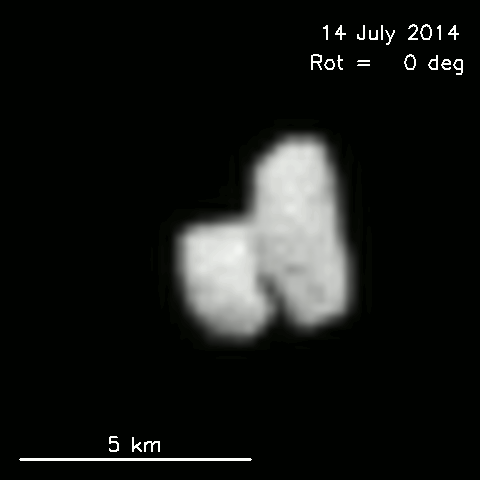Rosetta’s Comet Has a Shiny Necklace
New pictures show a bright “neck” where the comet’s two pieces join.
/https://tf-cmsv2-smithsonianmag-media.s3.amazonaws.com/filer/dd/da/ddda6f89-1924-4529-a1bc-8145aebd0170/comet_67p_july_2014.jpg)
As Europe’s Rosetta spacecraft closes in on the comet called 67P/Churyumov-Gerasimenko (man, is that thing crying out for a nickname), the object’s shape is coming into focus, literally. Pictures taken earlier this month showed that 67P is a “contact binary,” most likely formed when two lumps of space rock or rubble collided and stuck together to form one lump. Carsten Güttler of the Max-Planck-Institute for Solar System Research, where Rosetta’s OSIRIS camera was built, was quoted saying that the comet’s nucleus “looks a bit like a rubber duck, with a body and a head.” His colleagues must have liked the description, because they’ve taken to calling the area between the nucleus’s two lobes the “neck.”
Closer pictures taken last weekend show that the neck appears brighter, and may be made of a different material or have a different topography than the rest of the nucleus. Scientists have seen this kind of smooth-in-the-middle appearance before, notably in a comet called Hartley 2 that was visited by the EPOXI spacecraft in 2010.
We’ll soon solve the mystery: Rosetta is due to rendezvous with 67P on August 6.
